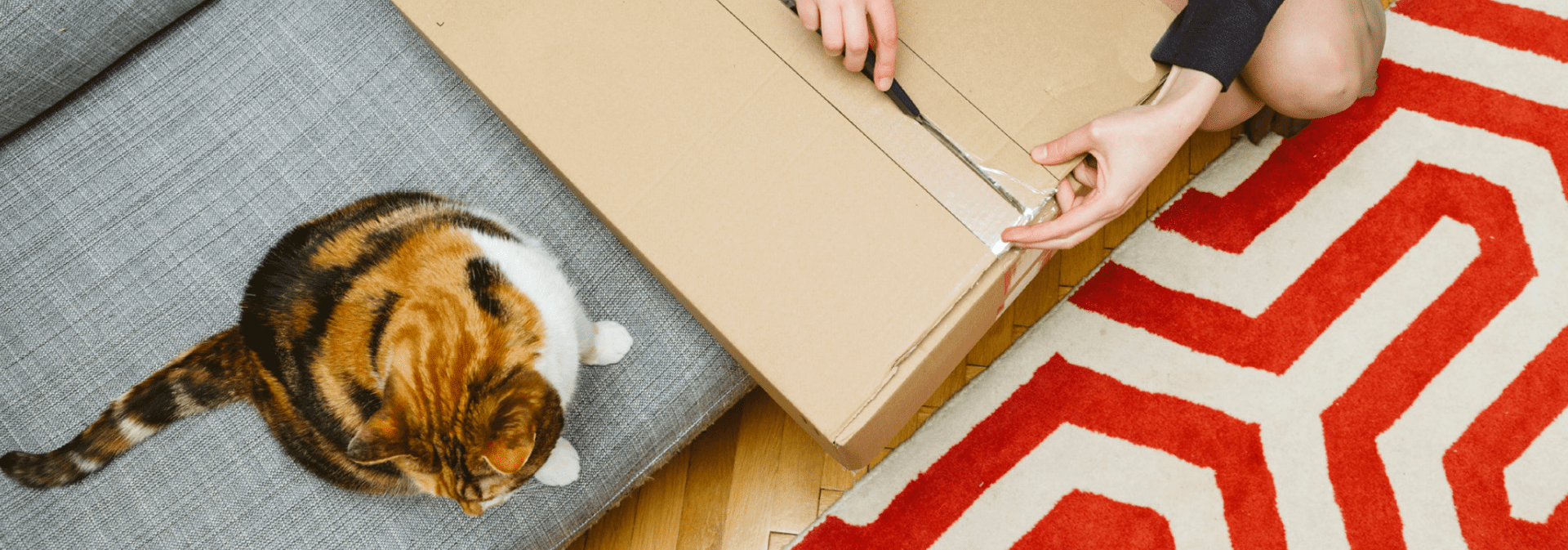We all upgrade our smartphone every two year, no matter whether it’s an Apple or an Android! It’s because any current technology is more powerful and more capable than the one, we owned 10 years before. Just like that, the business you run is not the same as it was when you started it.
In today’s fast-paced digital world, technology evolves so quickly that businesses struggle to keep up with their operating systems before they become outdated or obsolete. Legacy systems, though based on outdated technologies, are crucial for day-to-day operations. In simple terms, these are older software, programming languages, and hardware systems that companies still use, even though they’ve been outpaced by newer technology. While these systems were once cutting-edge and served their purpose, it’s evident that with the rapid changes in technology and the business environment, legacy systems are quickly becoming insufficient.
Reason why companies still rely on legacy systems
Despite the age or limitations, many organizations continue to use legacy systems primarily due to the following reasons:
Migration expenses
The transition from an outdated IT system to a modern one is typically costly and time intensive. While a contemporary system may eventually yield cost savings, the initial expenses, covering installation, integration, backfilling, and employee training, can pose significant challenges, especially for organizations on a tight budget.
Skills gap
Legacy systems, dependent on outdated technologies, demand a specific skill set for support and maintenance. As developers with expertise in these technologies retire or shift to newer platforms, finding and retaining qualified personnel becomes increasingly difficult. The associated costs of dedicated staff training further contribute to the challenge.
Fear of disruption
Organizations often cling to legacy systems because they continue to fulfill crucial business needs. Developed to meet specific requirements, these systems have become integral to the organization’s technology infrastructure over time. The prospect of replacing them with newer systems raises concerns about disrupting ongoing business operations.
Maintenance simplicity
Existing systems are easier to maintain as they have grown with the business. Over time, internal teams develop specialized skills and knowledge, enhancing their efficiency in resolving issues related to legacy systems.
Specific functionality
Legacy systems may have been tailored to address specific business needs, boasting customized features that are not readily available in newer alternatives. This unique functionality makes it challenging for businesses to transition away from these legacy systems, especially if their operational processes are tied to these features.
Types of legacy systems in use
End of Life (EOL)
End of Life legacy systems have reached a point where the vendor considers them no longer useful and discontinues the product. Support is terminated, and the product is no longer offered, necessitating a shift to alternative solutions.
No Updates Available
Beyond the End-of-Life stage, some legacy systems lack the option for replacement or updates. Unlike systems with newer versions or similar alternatives, these legacy software solutions present a challenge for businesses seeking change. Transitioning may require adopting new vendors and adjusting to unfamiliar processes to accomplish the same tasks.
Unable to Scale
Certain software systems face limitations in scalability, delaying their ability to support larger data streams or increased financial transaction volumes. As a company expands, these systems become obsolete and unsuitable for handling the growing demands placed upon them.
Heavily Patched
Software that has undergone numerous patches in the past may pose challenges in maintaining security. As the need for patches increases, especially after the vendor ceases support and stops addressing new security concerns, the software becomes progressively vulnerable. The absence of ongoing support makes it difficult to address emerging security issues and monitor existing vulnerabilities.
Key strategies to modernize legacy system
Switching from legacy systems to cloud-based systems can be done through three steps: Replace, Rebuild, and Upgrade.
Replace
The replacement strategy involves decommissioning legacy systems and substituting them with modern counterparts that offer enhanced functionality. In some cases, parts of the legacy systems may persist and coexist with the new systems. This scenario often arises when modern alternatives are either unavailable or economically less viable compared to the existing legacy infrastructure.
Rebuild
The rebuilding approach centres on constructing systems from the ground up to align with current business requirements. This method allows for a tailored and customized solution, ensuring a seamless migration from legacy to modern systems. However, given the considerable resources required for developing systems from scratch, this approach stands out as the most expensive and time-intensive route of modernization.
Upgrade
Upgrading a legacy system involves making incremental improvements to the existing infrastructure, ensuring compatibility with modern technologies. This strategy is the most cost-effective and straightforward, provided the legacy systems are amenable to upgrades. Applications that can be smoothly transitioned to a new version, retaining their previous settings and controls, are prime candidates for this pragmatic and economic modernization route.
Considerations for a successful modernization of legacy system
Evaluate current state
A comprehensive evaluation should scrutinize various aspects, including code, architecture, visual aesthetics, and alignment with future business plans. A systematic and detailed assessment helps identify current issues and potential challenges that may arise in the future.
Choose the swiftest modernization approach
Based on the thorough assessment, select a modernization approach that aligns with your needs and promises rapid results. Consider existing products, such as Software as a Service (SaaS) solutions, to avoid reinventing the wheel. Alternatively, opt for custom product development services if your system requires specific features. Adopting agile software development practices can expedite the process and deliver value promptly.
Simplify architecture and prioritize
Legacy systems often suffer from complexity issues, hindering their performance. Embrace simplicity in both architecture and functionality during the modernization process. Start with essential features and consider a microservices architecture for scalability. Ensure seamless compatibility with existing business tools, and account for future tool changes when building the application.
Choose optimal technology stack
When reengineering, select a robust and future-ready technology stack tailored to your product’s specifics. Consult with internal IT staff or seek professional tech consultancy for guidance. A well-chosen tech stack contributes to building a high-performing, reliable, and efficient product. Implement a rigorous quality assurance and testing process for optimal results.
Document for future growth
Prevent repeating mistakes by establishing coding standards and internal processes. Clear, well-documented code enhances the software’s understanding, extension, and maintenance. Adopt best practices used by other companies to create a foundation for future system growth.
Implement separate support and retirement schedule
Even with a new system in place, maintain support for the legacy software for a transitional period. Document and archive solutions to ensure easy access when needed. Plan for retiring the legacy system only when the new product is fully operational.
Allocate budget for training and updates
Acknowledge the need for employee training during the transition from old to new systems. Allocate resources for staff training to enhance performance and efficiency. Additionally, plan for regular system updates to avoid future modernization challenges resulting from outdated software.
Advantages your company can achieve through legacy systems modernization
Increased efficiency
Upgrading from a legacy system enables access to cutting-edge technology and tools designed for cloud-based systems. This results in improved functionality, productivity, and overall efficiency. Modernization ensures reduced downtime, as providers promptly address and fix technical issues.
Enhanced security
Transitioning to the cloud enhances data security, thanks to advanced encryption and reduced human access to data warehouses. While the responsibility to configure services lies with your company, cloud storage offers heightened security measures. Remember to prioritize data protection during the migration process, especially in sensitive areas like insurance legacy system transformation.
Scalability & flexibility
Legacy systems often present limitations hindering business scalability. Modernization eliminates these barriers, providing the scalability and flexibility needed for business growth. With no constraints from physical hardware, the computing system can adapt seamlessly to evolving requirements and changing business demands.
Cost reduction
Legacy systems suffer various costs, including ongoing maintenance and investments in new hardware and software. Modernization removes these expenses, allowing you to pay only for the services and resources you use. In contrast to escalating costs associated with monolithic architecture, modernizing leads to substantial savings year after year.
Improved user experience
Enhancing customer satisfaction involves providing an exceptional user experience. Legacy systems have limitations in this regard, but modernization opens up limitless possibilities. By securing and organizing customer data more effectively, it’s possible to develop applications and tools that streamline and enrich their journey, resulting in a smoother and more enjoyable experience.
Summary
Legacy systems persist as integral components of numerous businesses, even amidst the surge of modern technologies. Despite the inherent challenges and associated risks, the continued utilization of legacy systems is underpinned by their unwavering reliability and specialized functionalities. Recognizing the potential drawbacks of these systems and devising effective strategies for modernization enables businesses to use their advantages while remaining competitive in today’s dynamic business landscape.
To execute a seamless migration, a company requires a top-tier technical support team armed with extensive knowledge and experience in navigating the intricacies of legacy systems. Milestone stands out as one of the top Salesforce service companies in the USA, offering a reliable solution for companies of all sizes and industries seeking a smooth transition from legacy systems. To ensure a successful and efficient legacy transformation, connect with Milestone and you’ll be able to successfully position your business in the contemporary business ecosystem.




